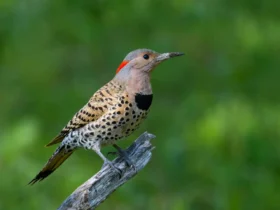In the dense forests and steep mountains of the Eastern Himalayas, a resplendent bird displays its colorful plumage and intricate courtship rituals—Temminck’s Tragopan (Tragopan temminckii). Named after the Dutch zoologist Coenraad Jacob Temminck, this stunning pheasant species captivates with its vibrant appearance and elaborate displays. Join us as we embark on a journey to explore the captivating world of Temminck’s Tragopan, uncovering its remarkable features, behavior, and significance in the Himalayan ecosystem.
Temminck’s Tragopan images
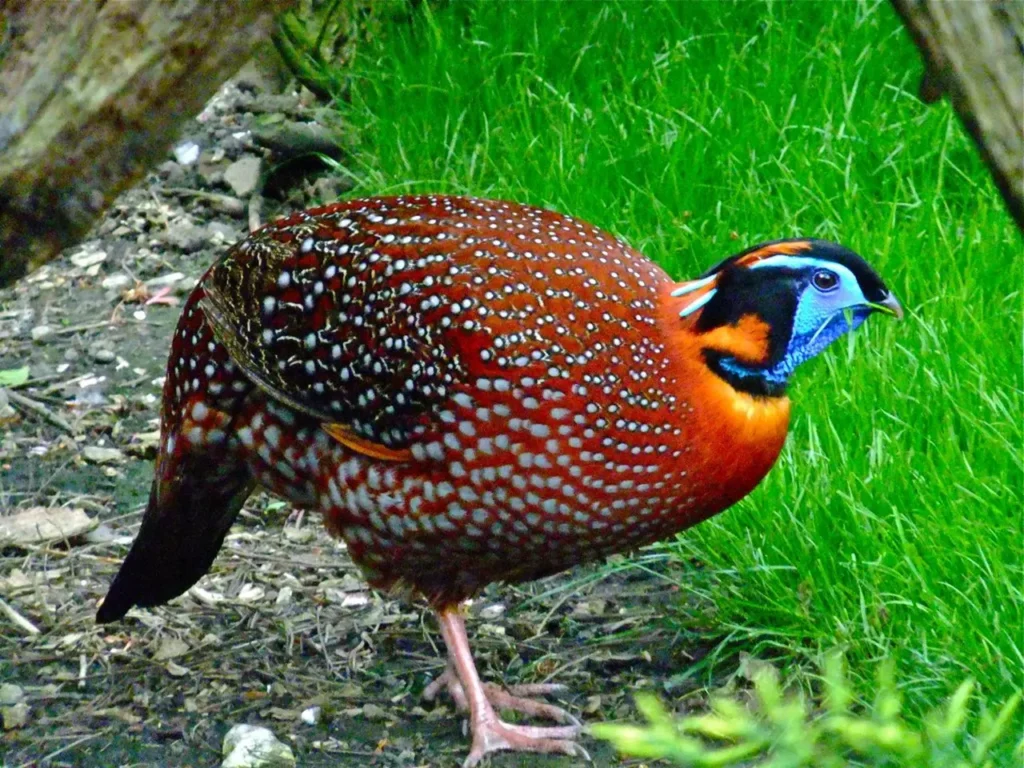
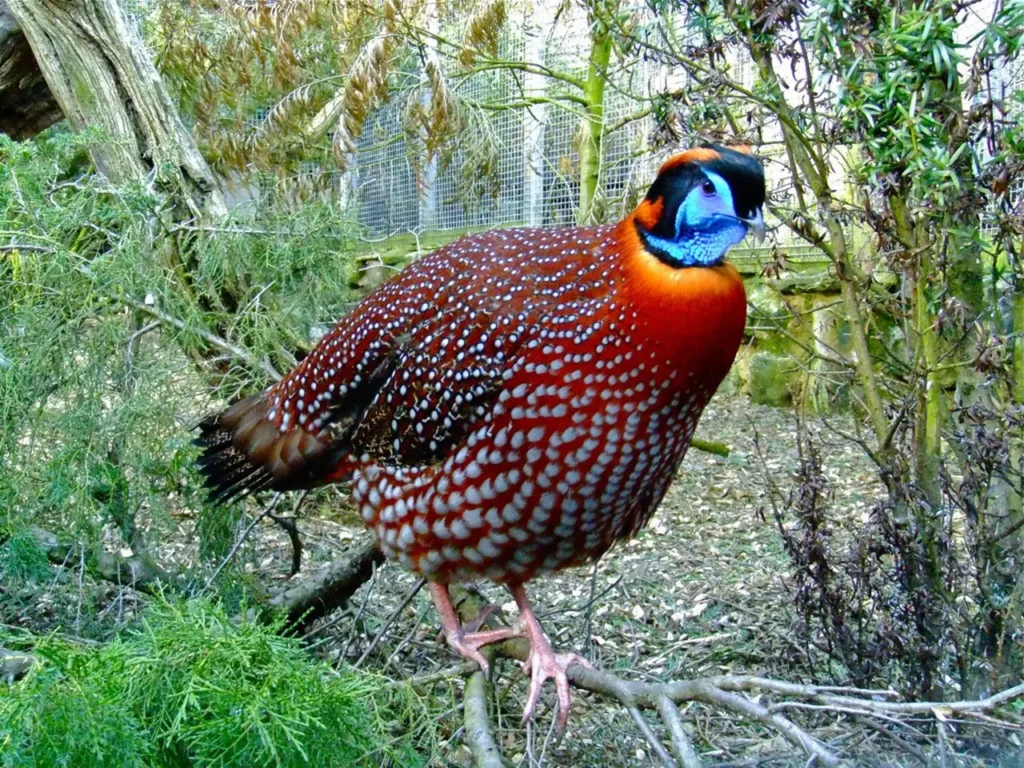
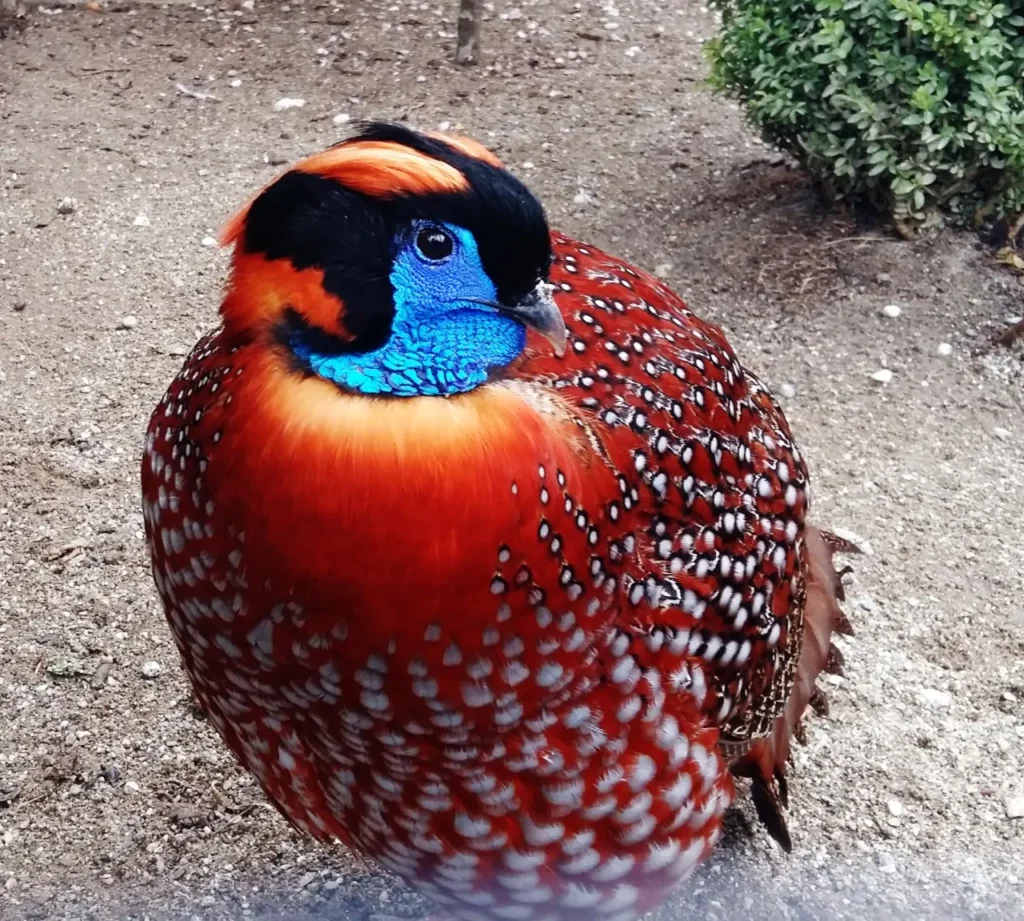
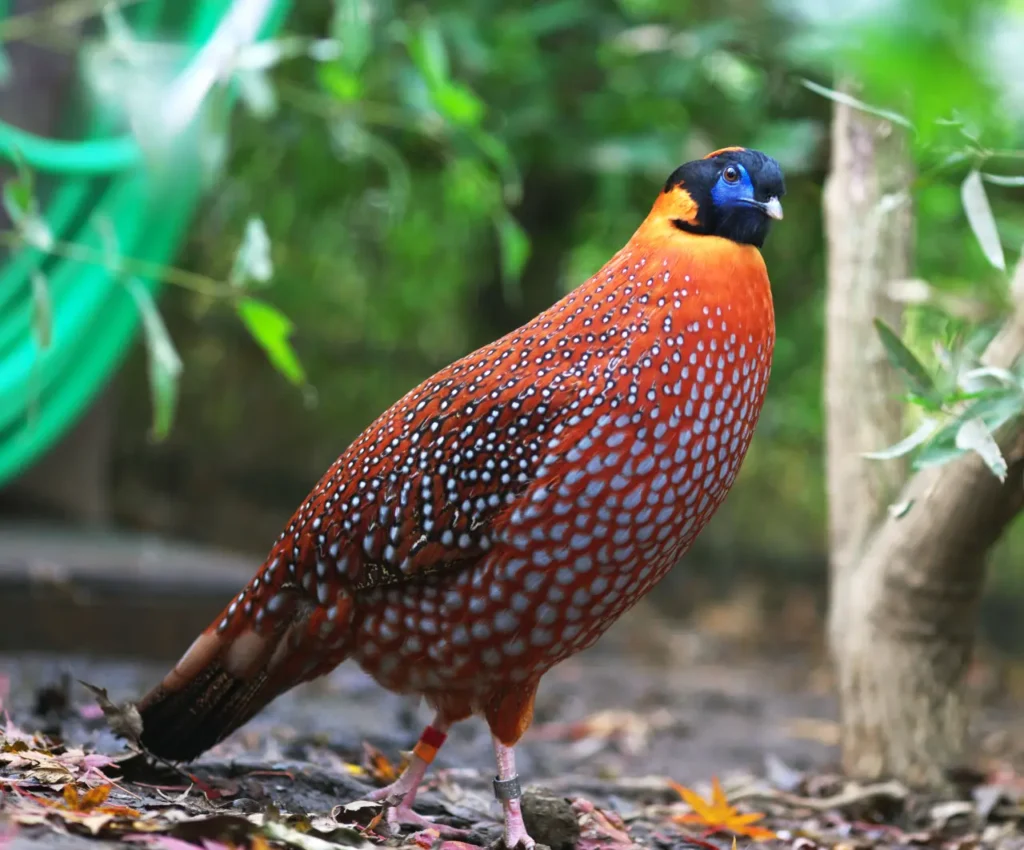
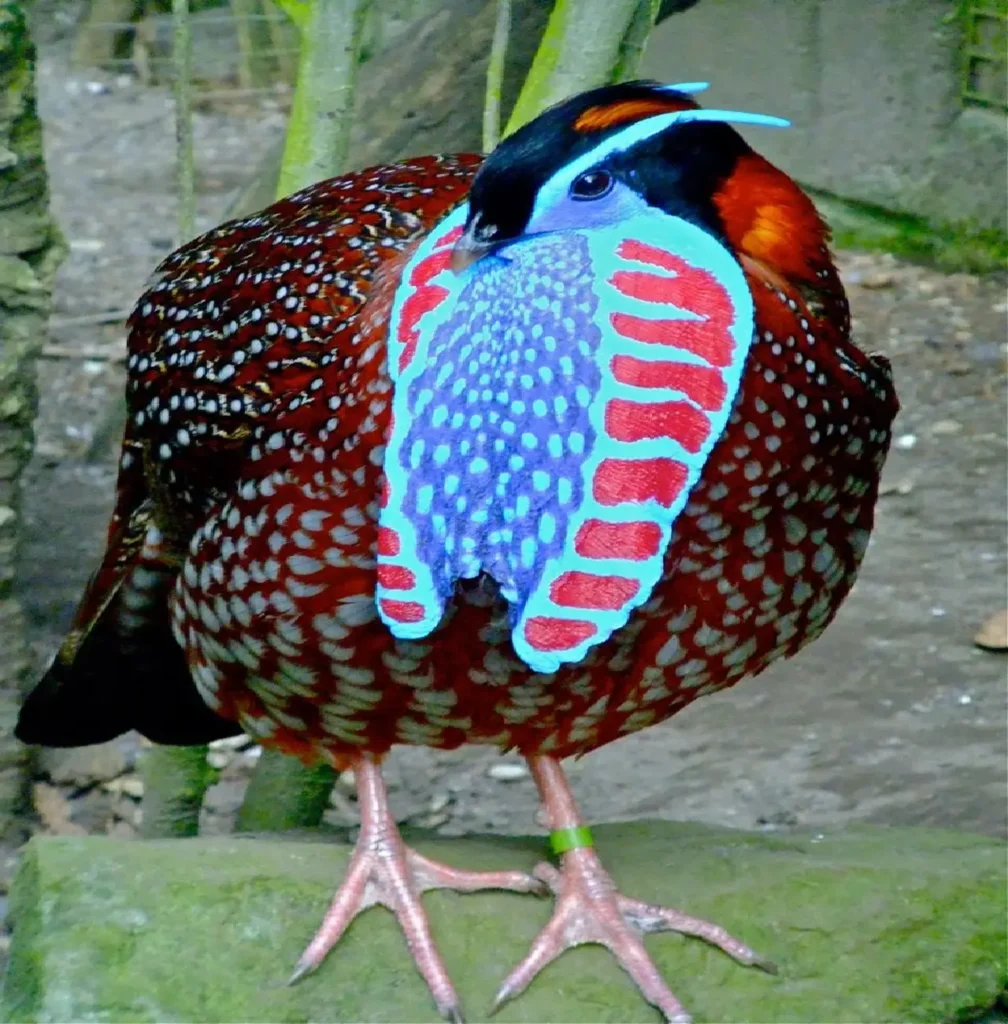

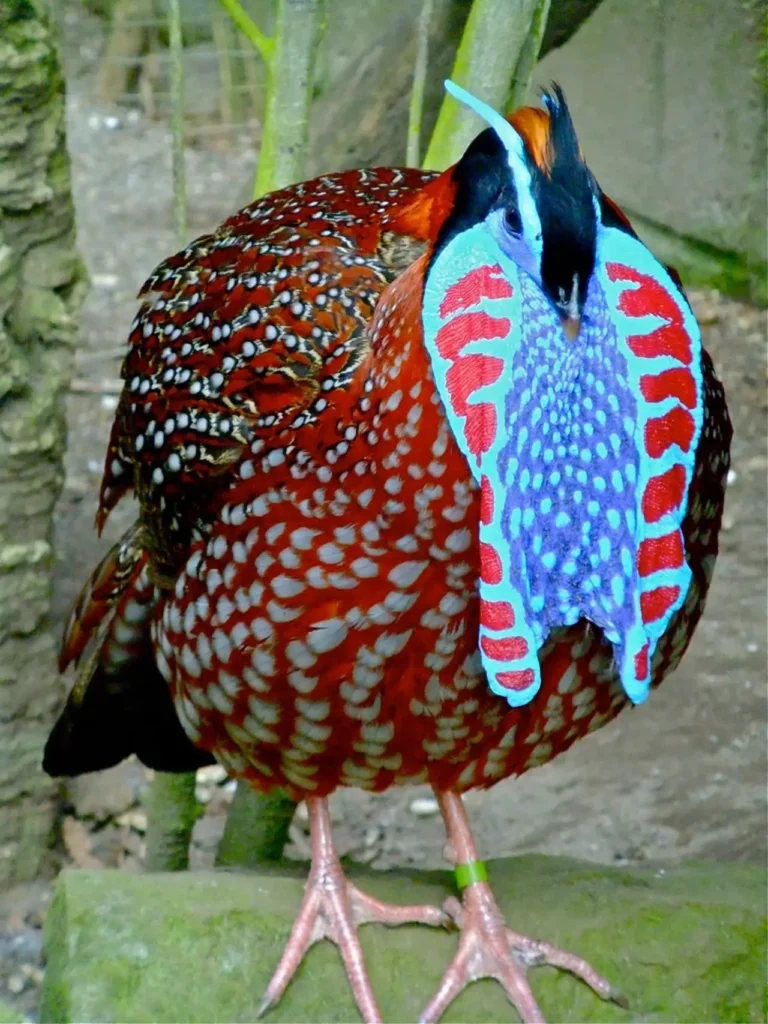
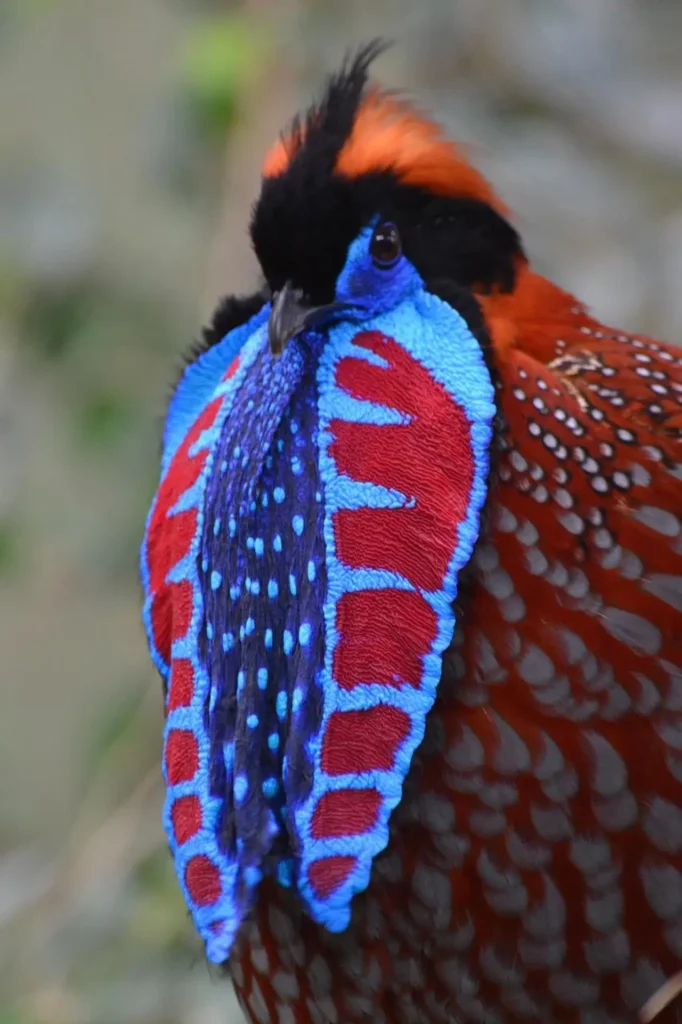
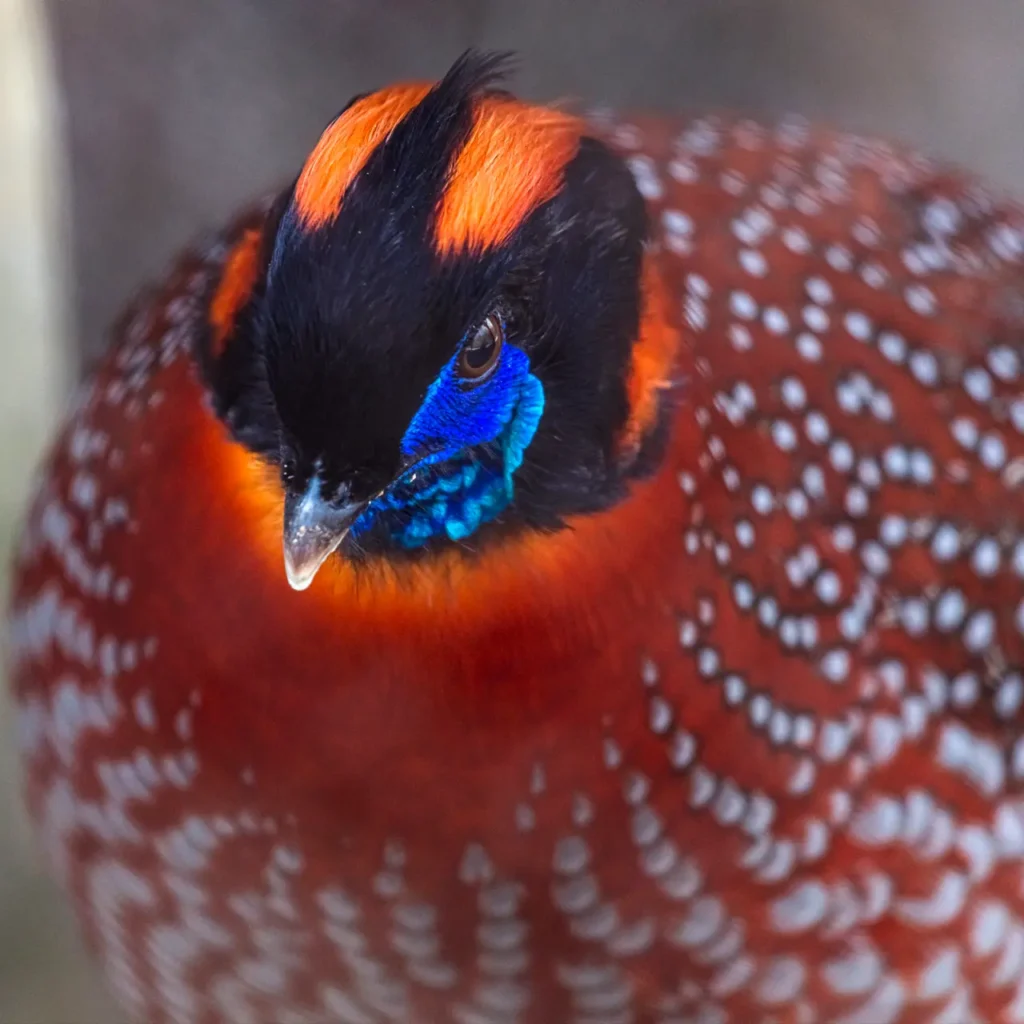
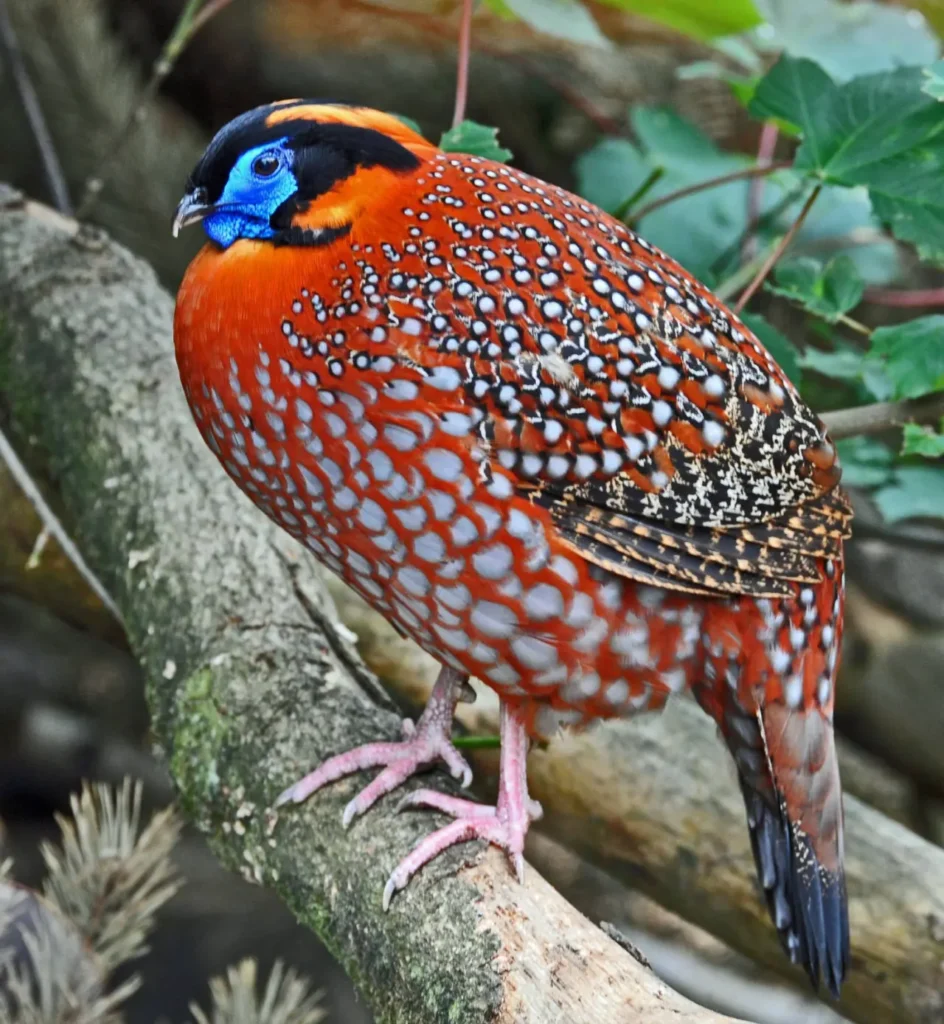
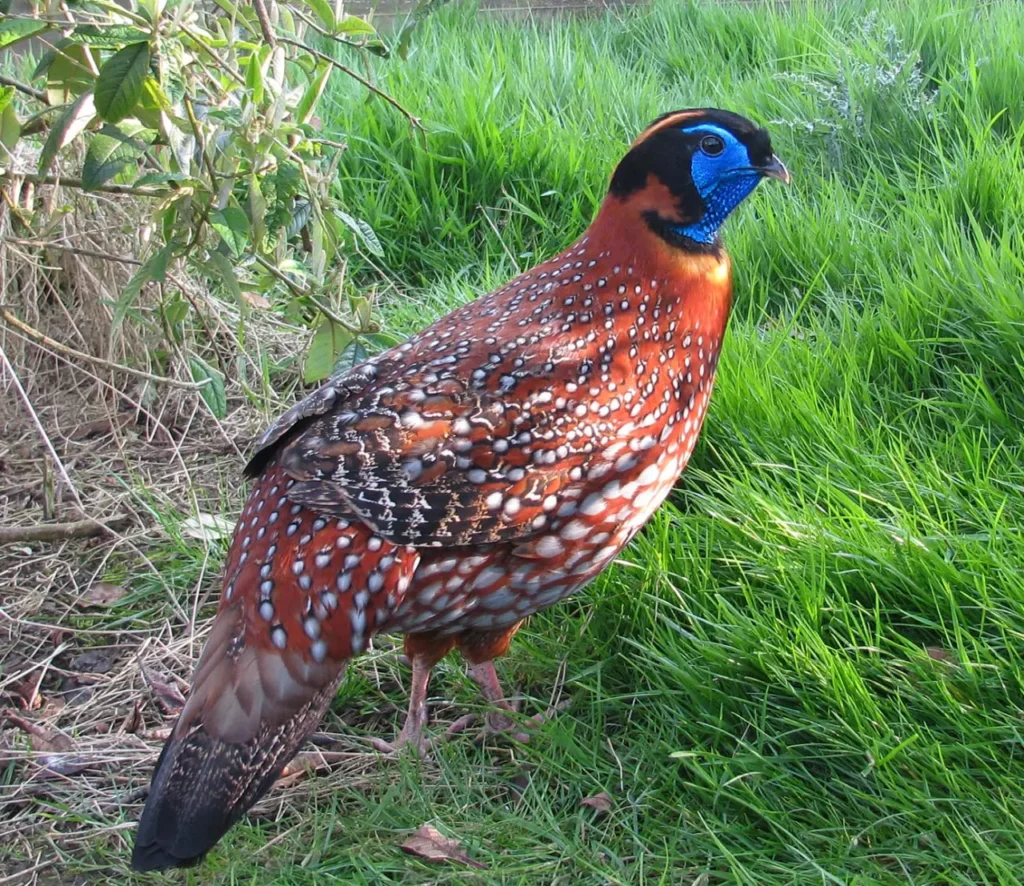
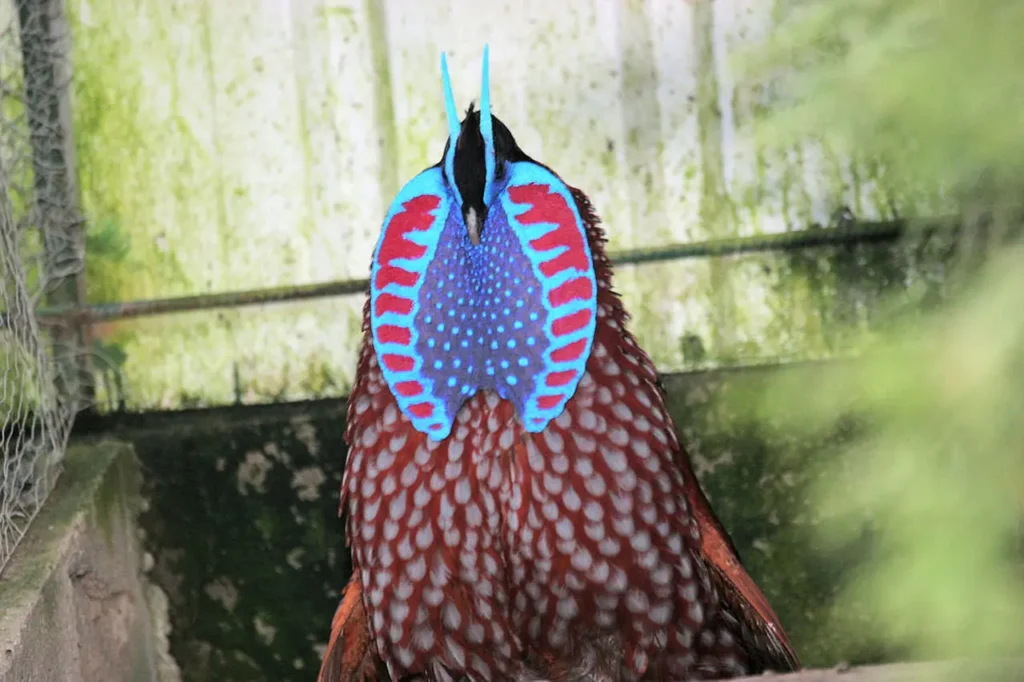
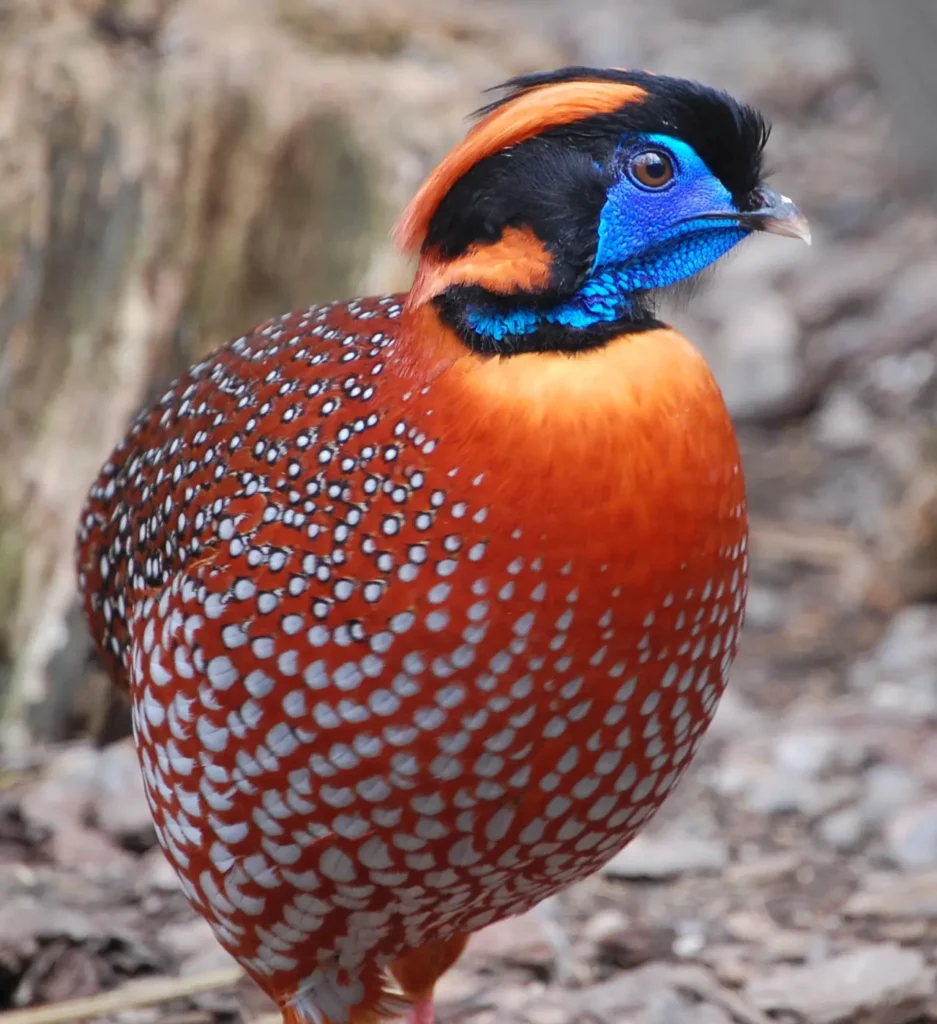
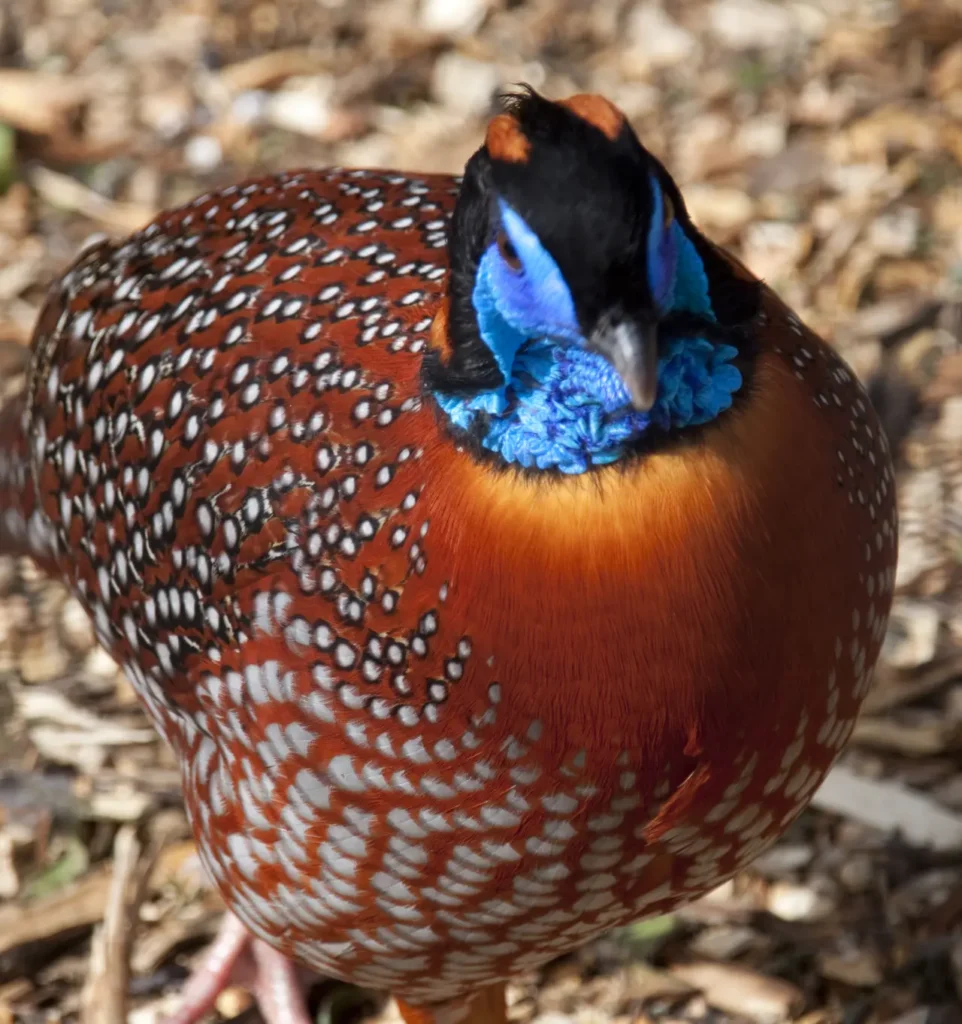
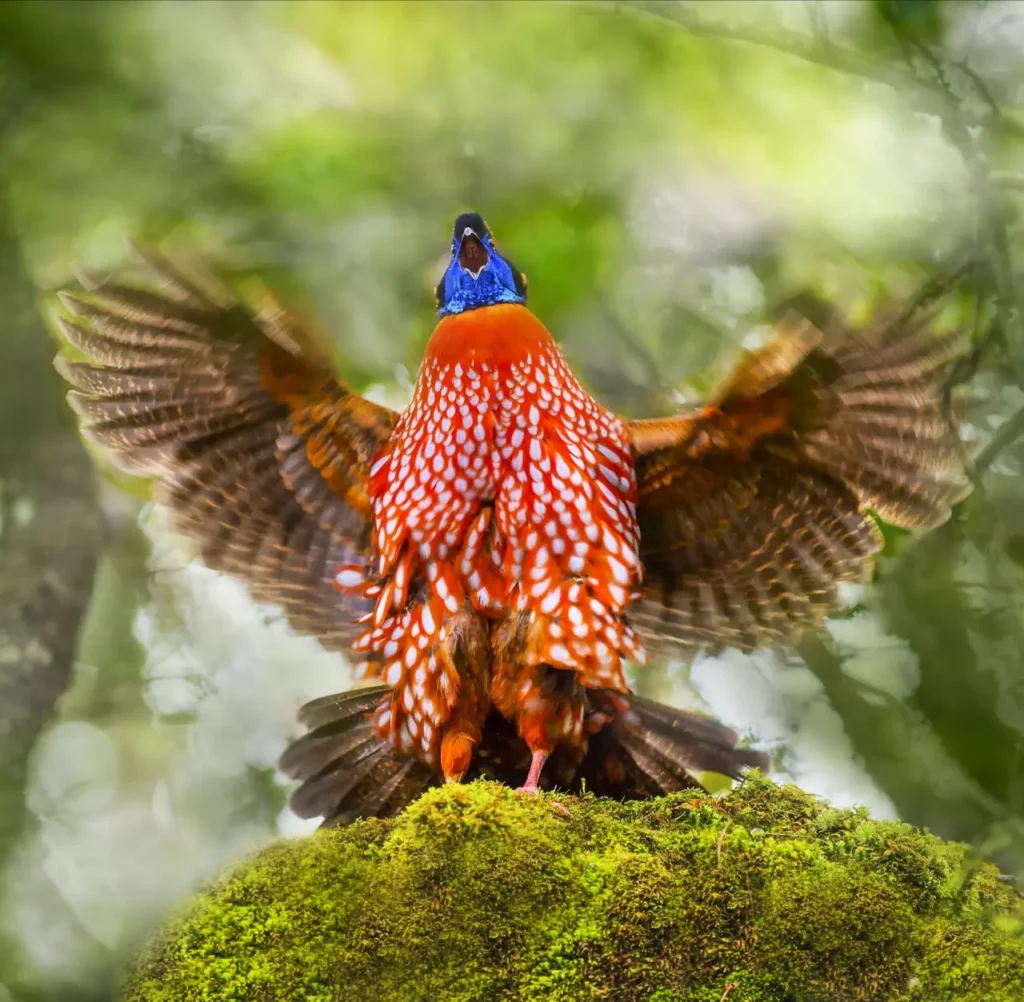
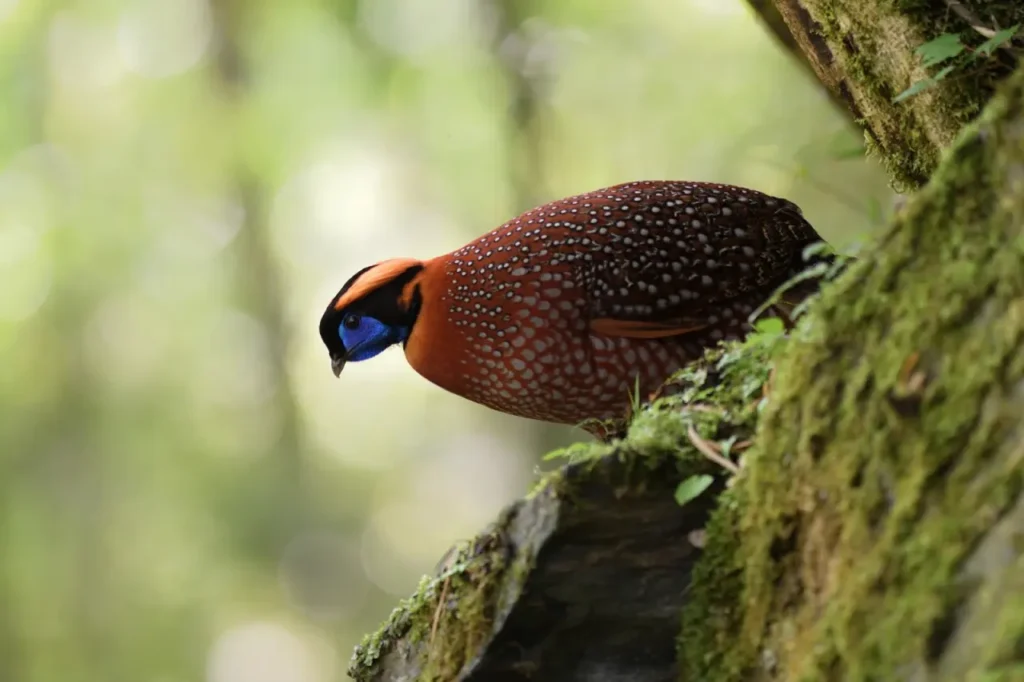
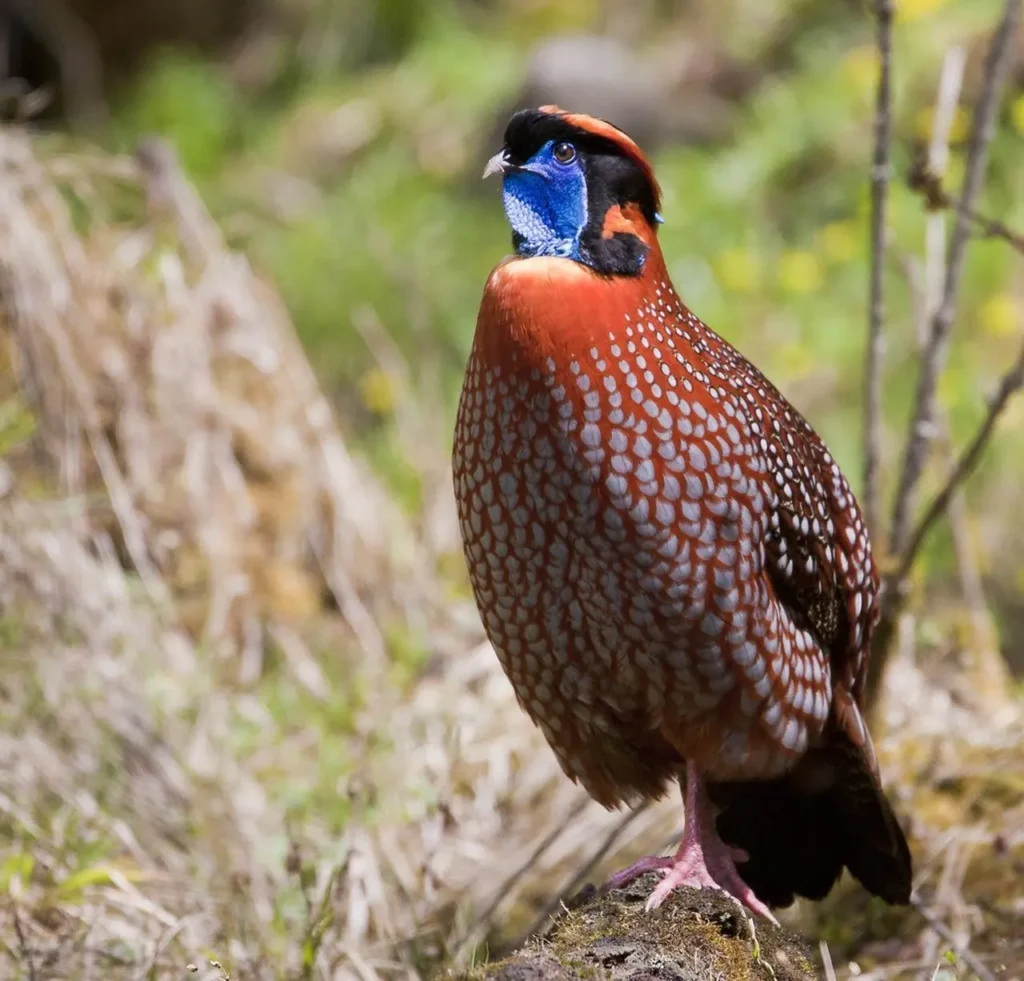
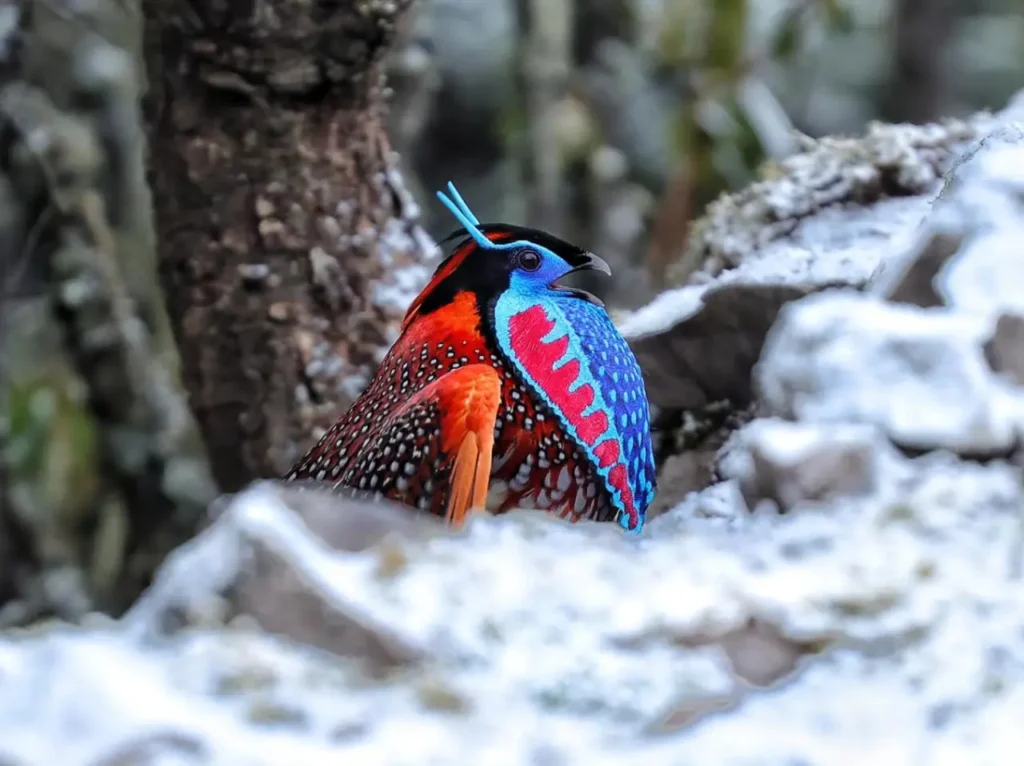
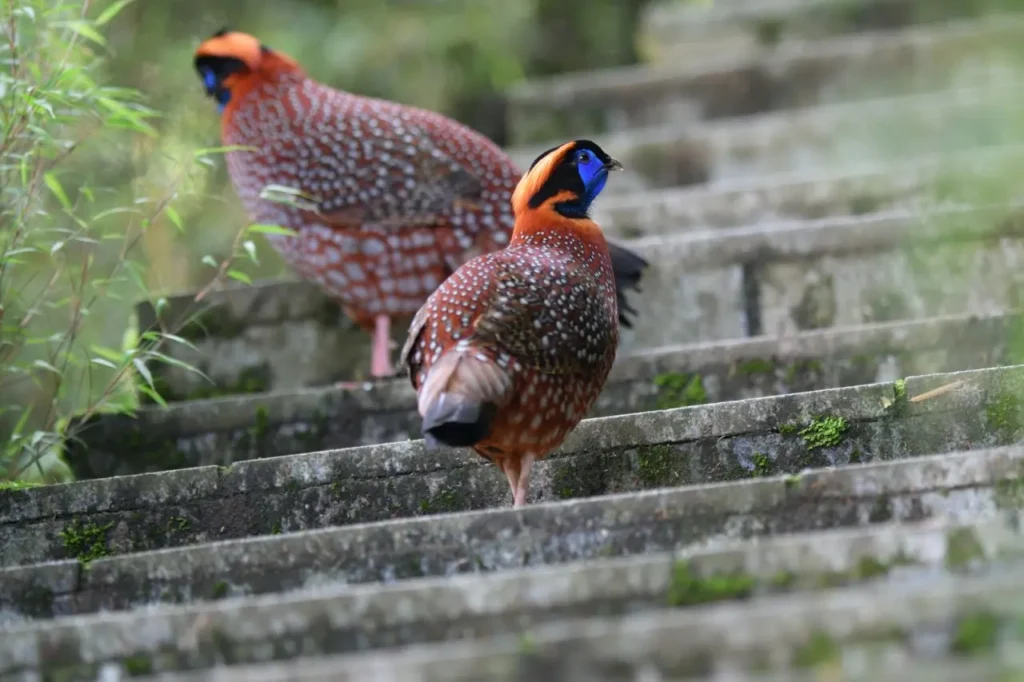
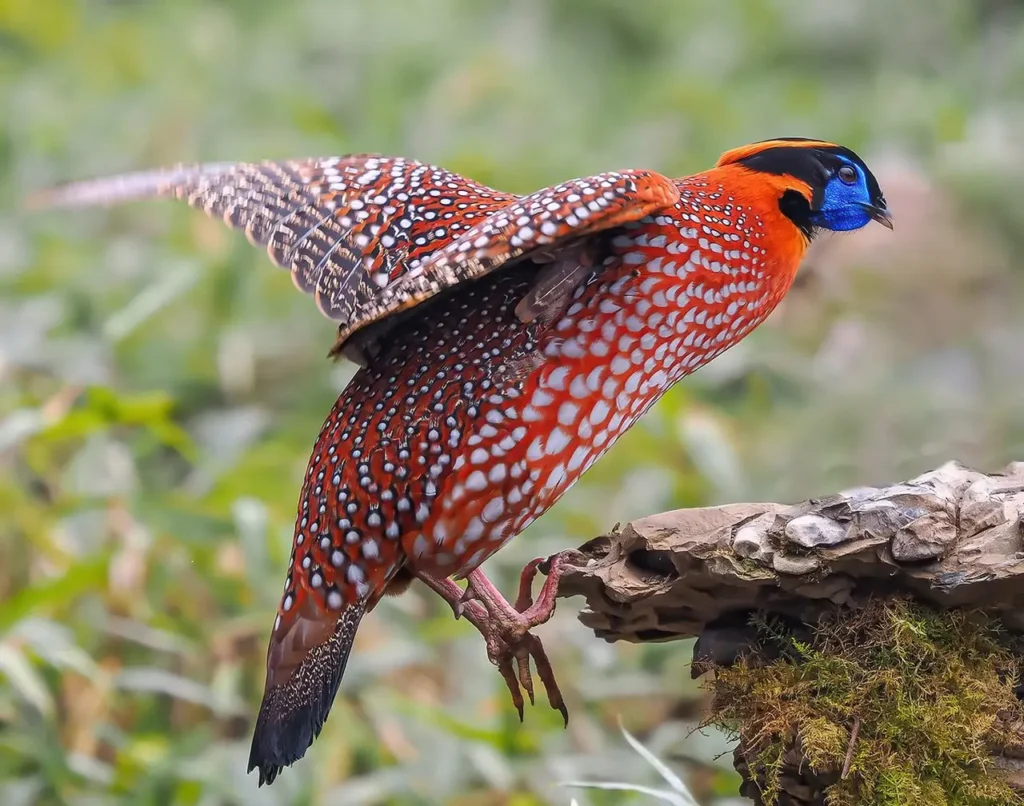
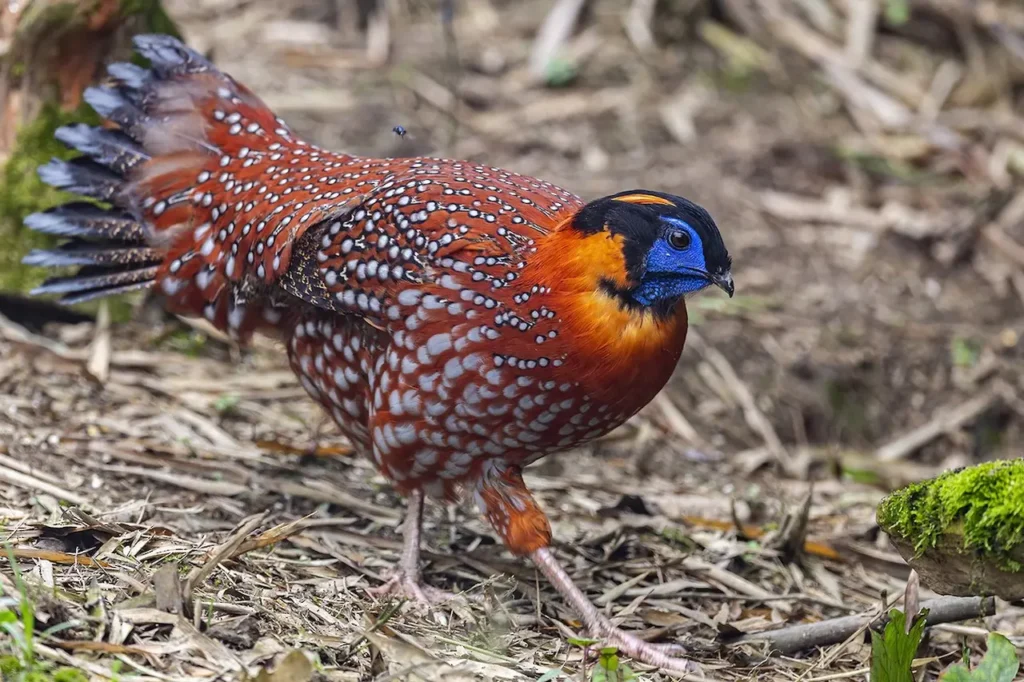
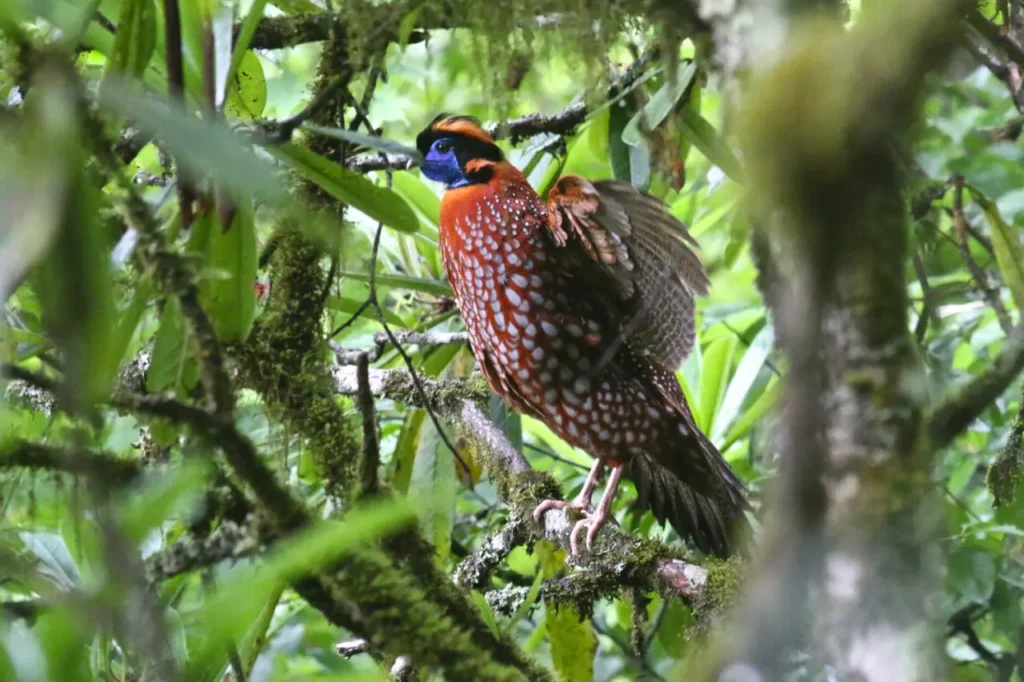
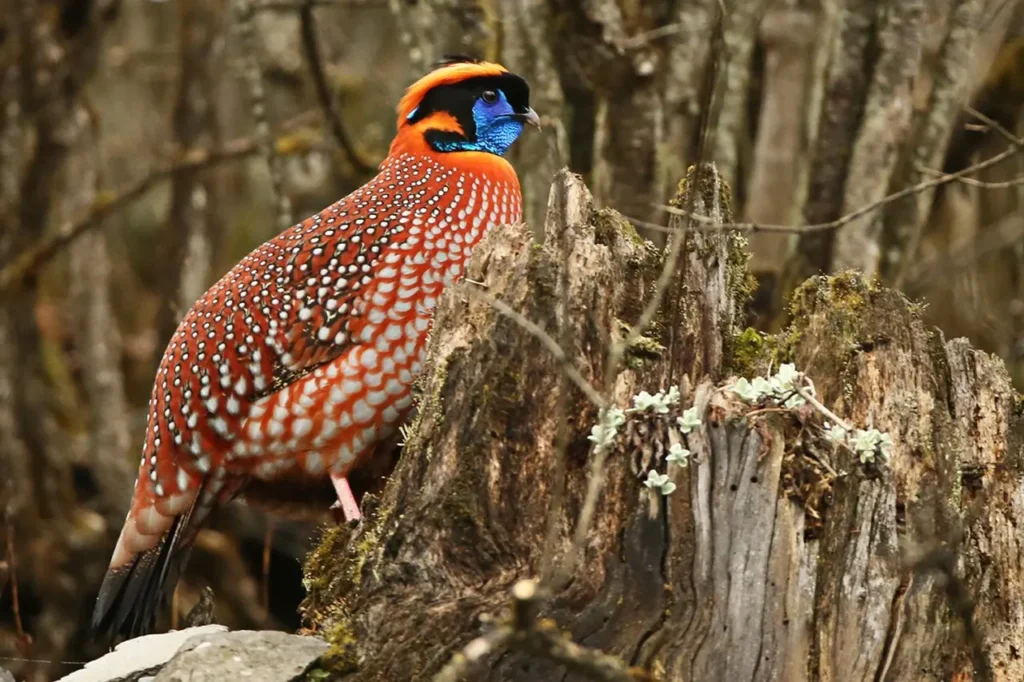
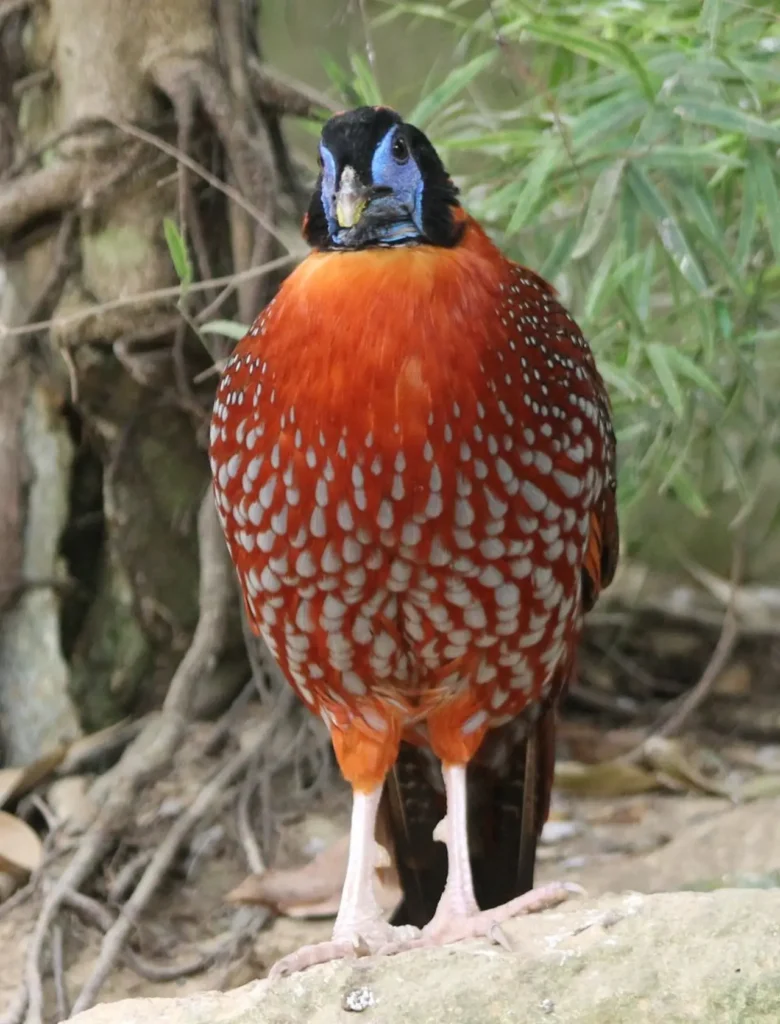
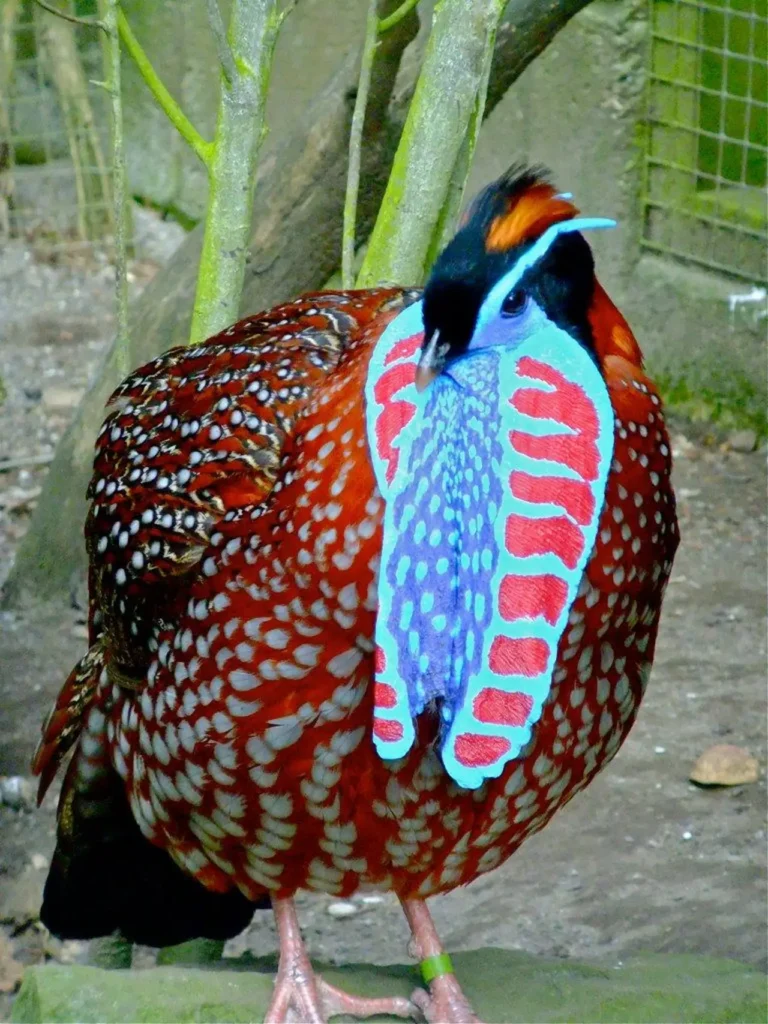
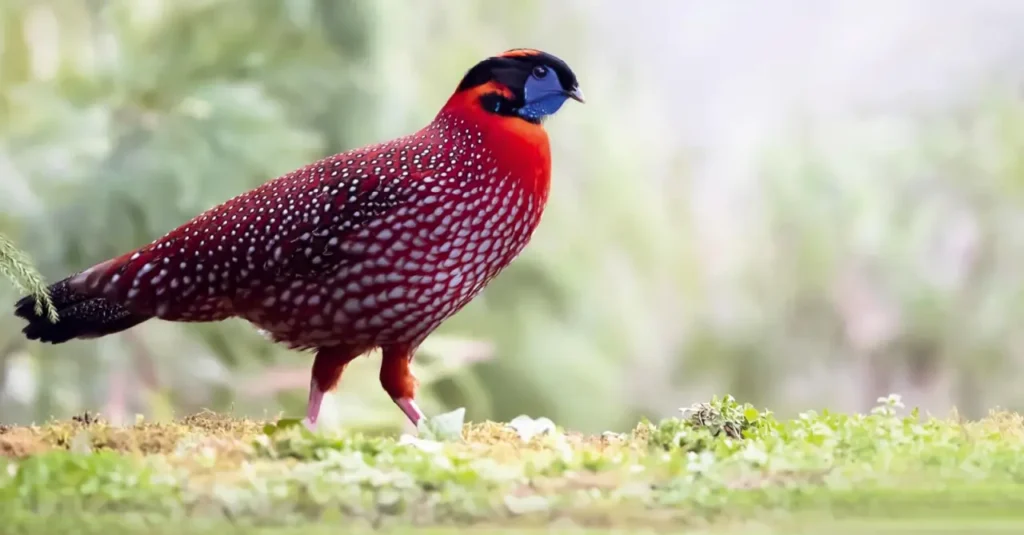
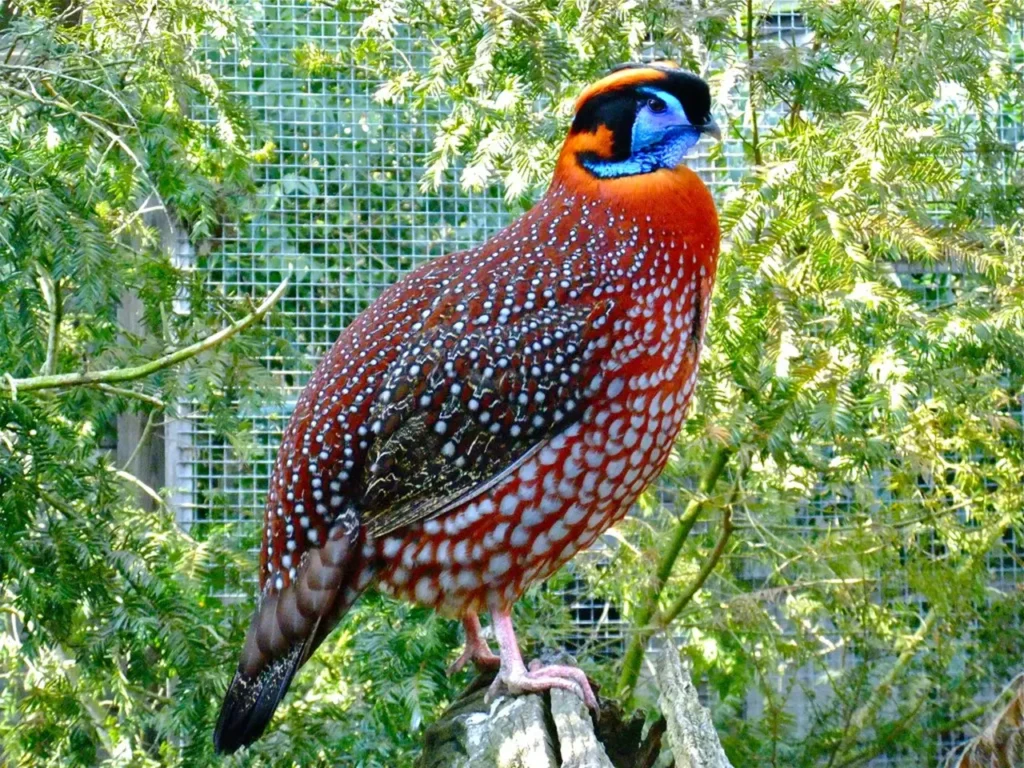
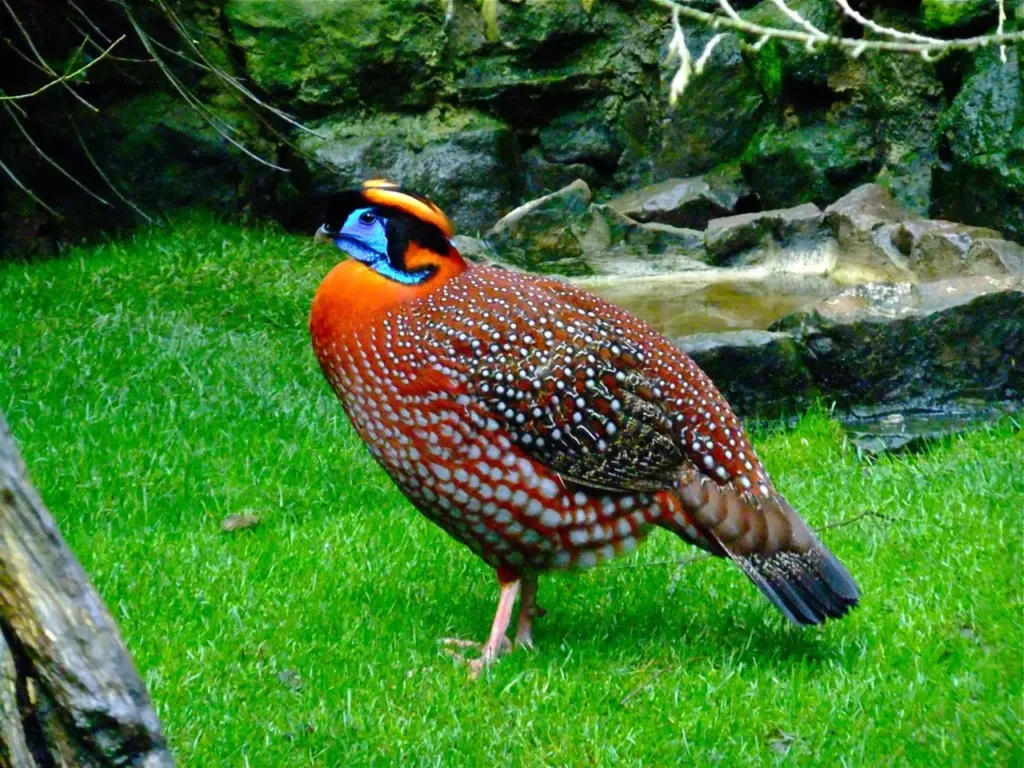
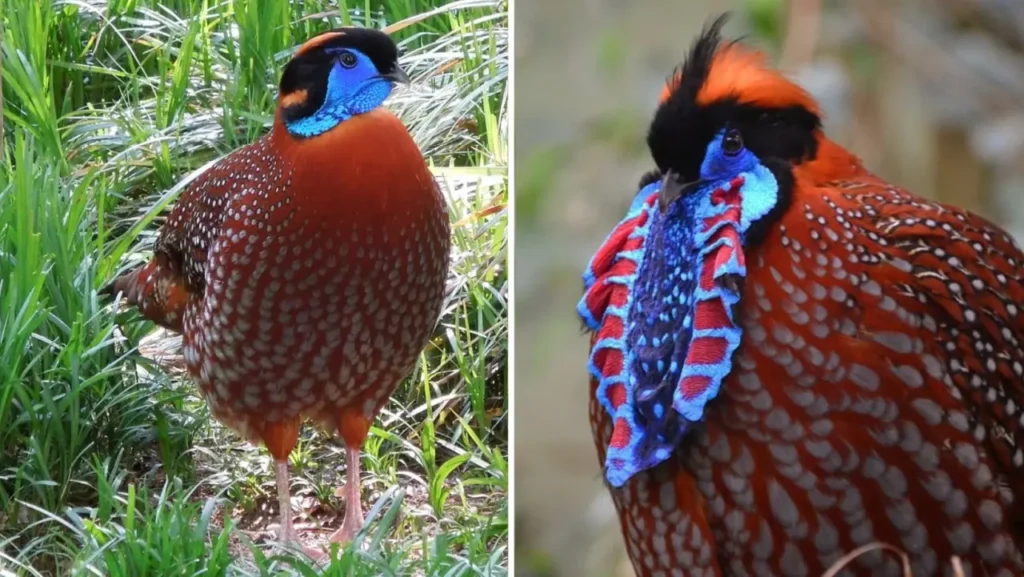
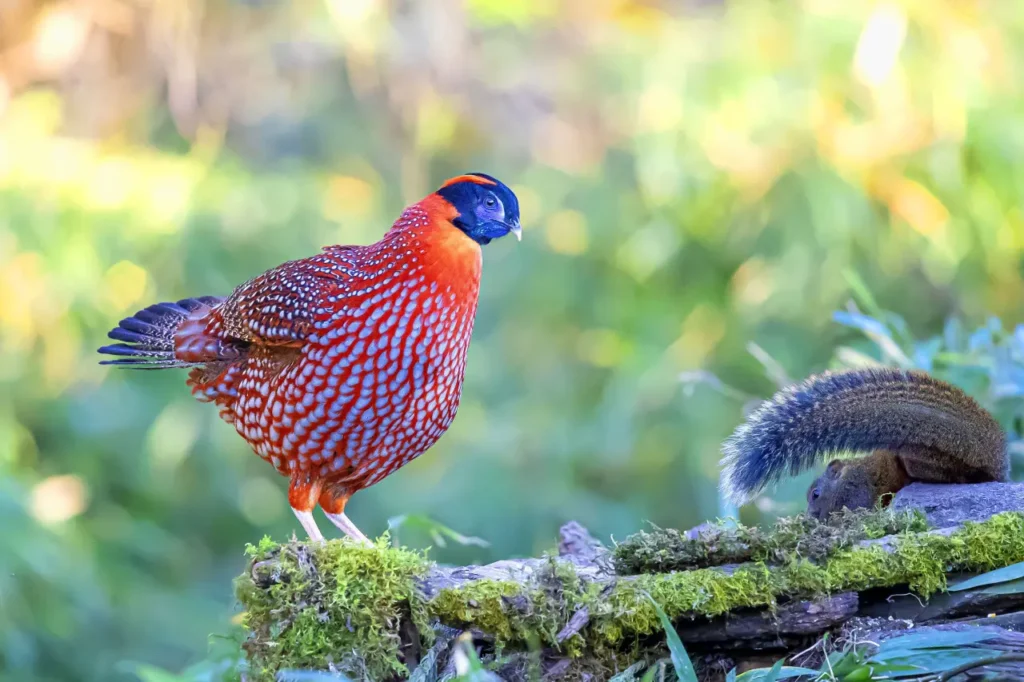
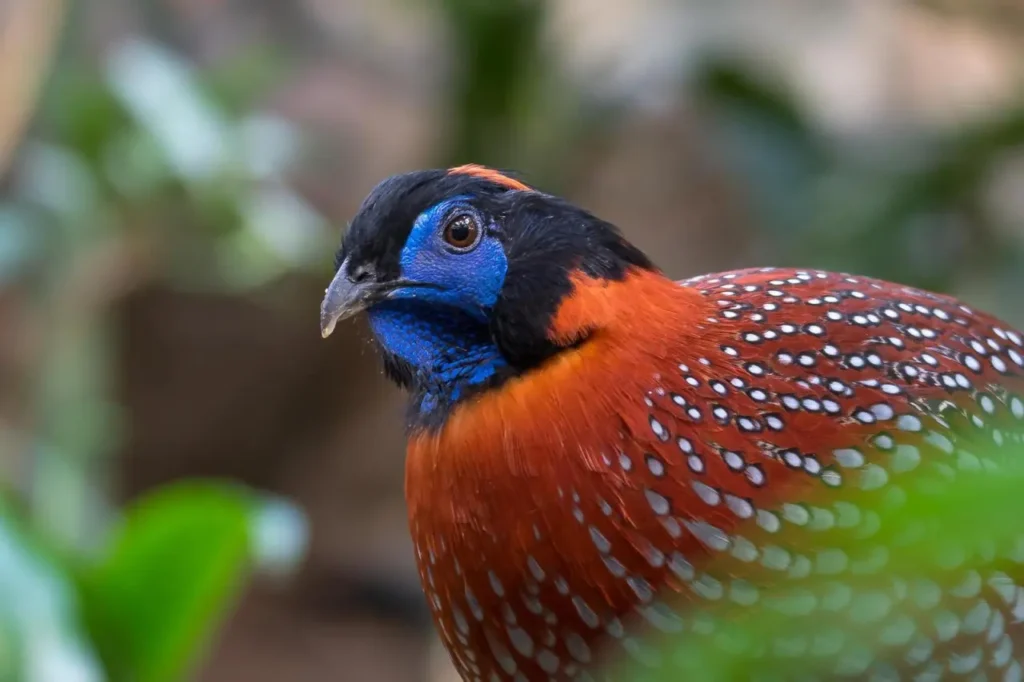
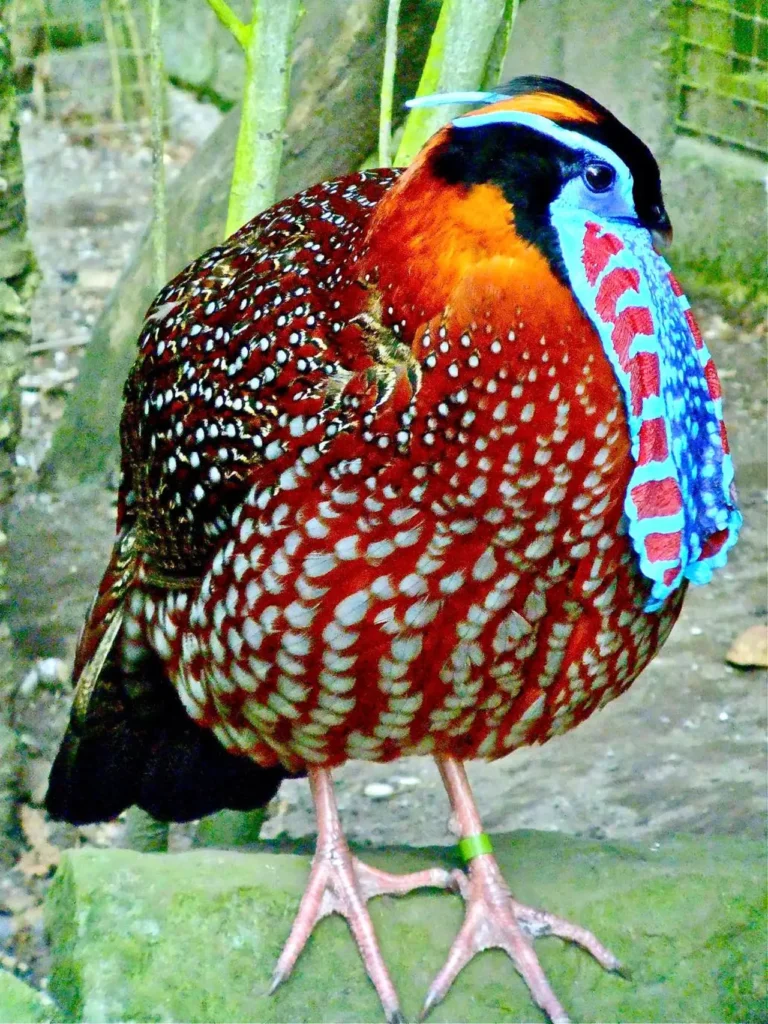
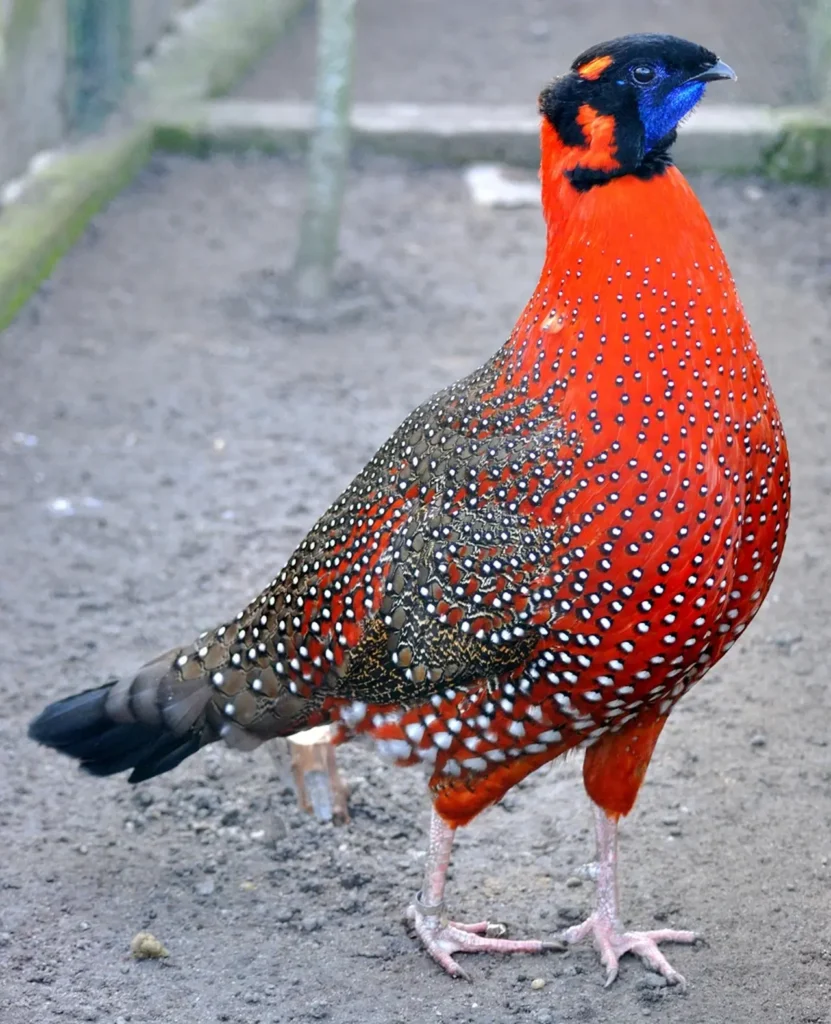
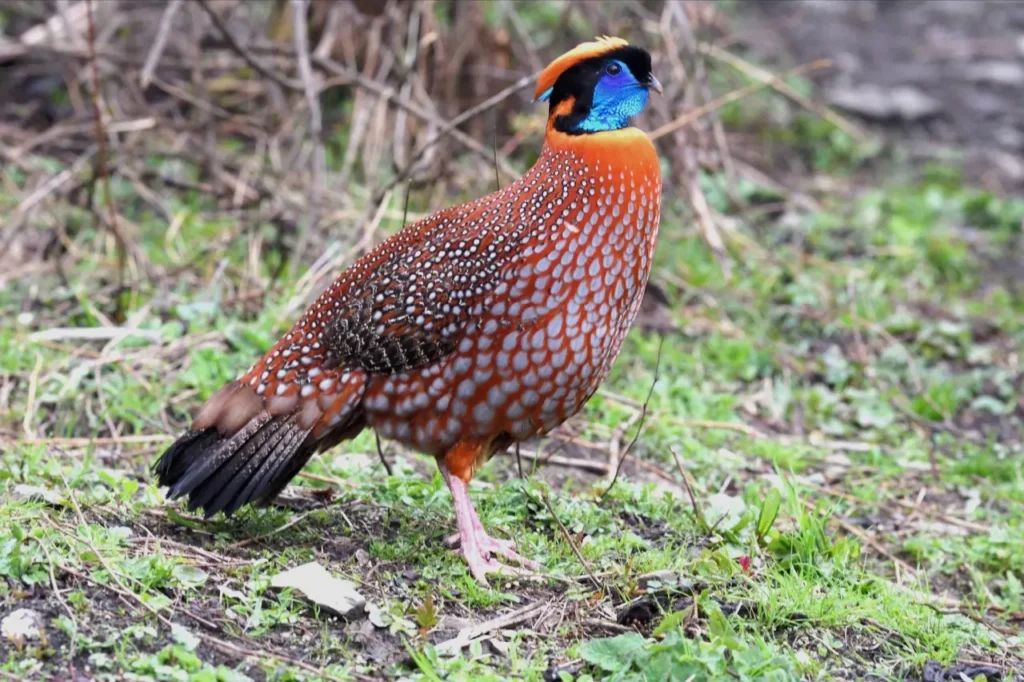

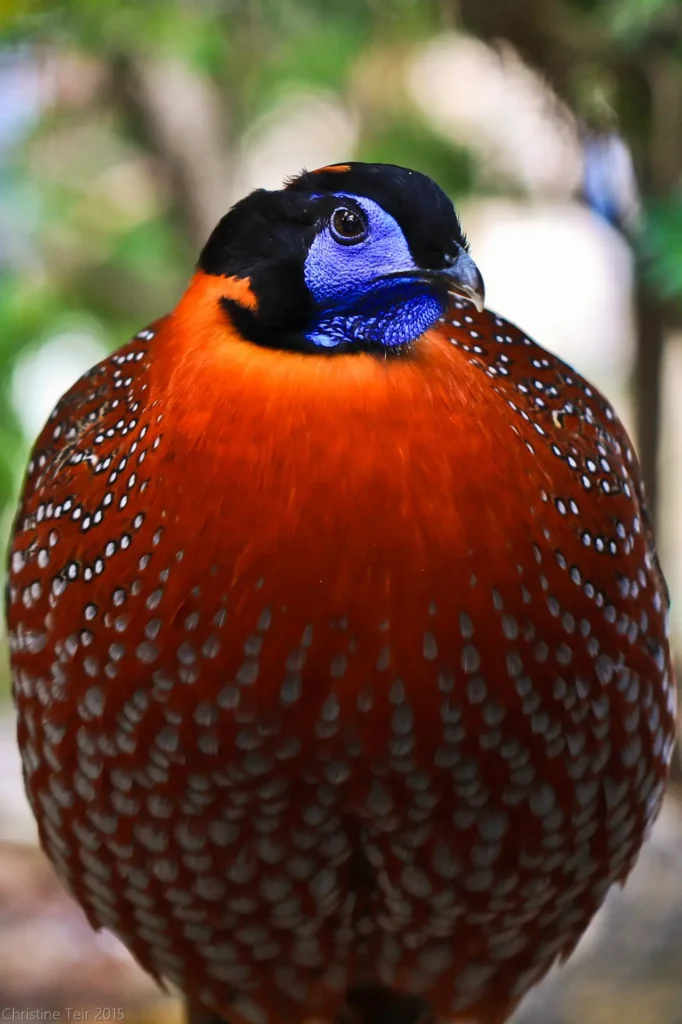
Appearance and Distribution
Temminck’s Tragopan is a medium-sized pheasant with extravagant plumage. The male, adorned with a combination of deep crimson, black, white, and various shades of brown, presents a captivating sight. Its most distinctive feature is the inflatable bright red throat pouch, or “wattle,” which the male puffs up during courtship displays to attract females. Females, on the other hand, exhibit more muted colors, with a brownish plumage and white spots.
Native to the Eastern Himalayas, including parts of northeastern India, Bhutan, Nepal, and China, Temminck’s Tragopan thrives in dense forests and bamboo thickets at altitudes ranging from 1,500 to 3,500 meters.
Behavior and Courtship Displays
During the breeding season, the male Temminck’s Tragopan engages in elaborate courtship displays to attract a mate. It showcases its stunning plumage, erects its feathers, and spreads its wings to create a colorful and striking spectacle. The inflated red throat pouch, reminiscent of a large balloon, adds to the visual splendor. The male also utters distinctive calls and performs elaborate dances, bobbing and bowing to impress the female. These displays demonstrate the male’s fitness and play a crucial role in pair formation.
Ecological Significance
Temminck’s Tragopan is an important species within the Eastern Himalayan ecosystem. As a frugivorous bird, it feeds on a variety of fruits, berries, and seeds, contributing to seed dispersal and the regeneration of forest plants. Additionally, the pheasant’s presence influences the balance of invertebrate populations and serves as a prey species for larger predators.
Conservation Status and Threats
Temminck’s Tragopan is listed as Near Threatened on the IUCN Red List due to habitat loss and hunting pressure. Deforestation, habitat fragmentation, and agricultural expansion pose significant challenges to the species. Additionally, illegal hunting for its feathers, meat, and traditional medicinal use further threatens its populations. Conservation efforts focusing on habitat protection, community engagement, and raising awareness about the importance of conserving this iconic species are crucial for its survival.
Cultural Significance
Temminck’s Tragopan holds cultural significance in the regions it inhabits. The bird’s striking appearance and courtship displays have been celebrated in local folklore, art, and traditional ceremonies. It symbolizes beauty, vitality, and the delicate balance of nature. Embracing sustainable practices and respecting the cultural significance of this pheasant can help foster its conservation and ensure its place in the cultural heritage of local communities.
Appreciating Nature’s Artistry
Temminck’s Tragopan, with its resplendent plumage and intricate courtship displays, stands as a testament to the beauty and diversity of avian life. Its presence in the Eastern Himalayas serves as a reminder of the fragile and interconnected web of life within this majestic mountain ecosystem.
By valuing and conserving the habitat of Temminck’s Tragopan, we not only protect the survival of this remarkable bird but also contribute to the preservation of the Eastern Himalayan biodiversity and the cultural heritage tied to its existence. Let us appreciate and protect this majestic species, ensuring its continued presence for generations to come.
